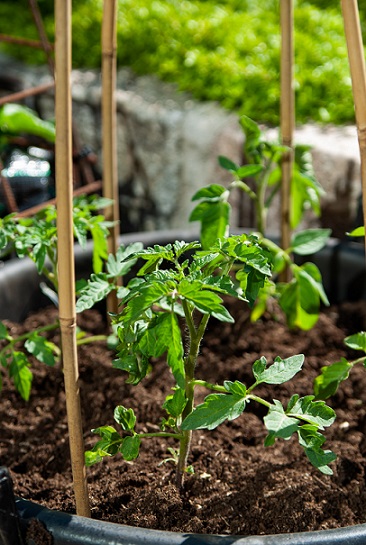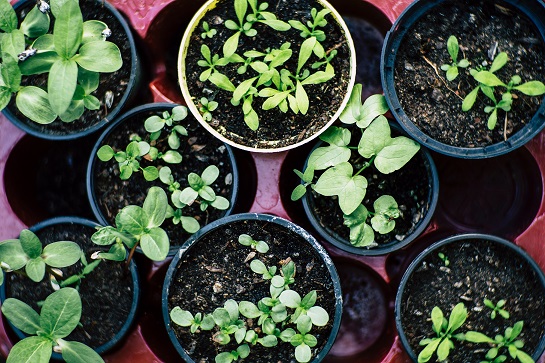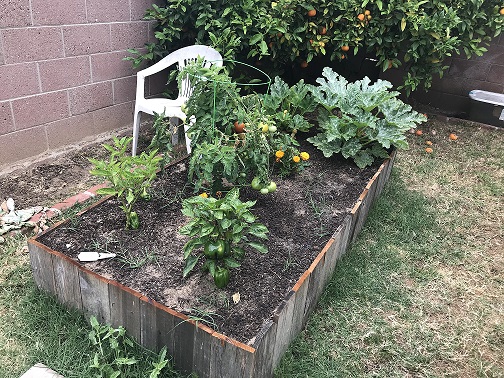
Spring (and Summer) Gardening: Getting Started
Spring is the ideal time to start experimenting with a vegetable garden. The weather is favorable enough where plants won’t get burned out by excess heat and there’s no risk of any upcoming frost!
When garden blogs/books mention preparing for a spring garden, they’re talking about cool season crops like brussels sprouts, cabbage, broccoli and etc. Since the cool air is still lingering from the winter months, those crops are usually sown in late winter/early spring,
Tomatoes, peppers and other heat-loving vegetables that we would normally associate with spring time are considered summer crops. Those are usually planted in mid-Spring and will mature by summer time. Depending on where you live and how mild your winters are, you can plants these type of vegetables in early spring or even late Winter.
If you look at my post for zones and frost dates, you can find out what climate region (aka zone) you’re in and it’ll come in handy when it comes to scheduling your vegetable planting.
Let’s start with time frames for planting an early spring garden:
If you want to plant cool season crops (you can also check out my other post for Fall Gardening, which has a decent list of cool season crops to choose from) here are the usual dates to start sowing seeds:
Zones 3-4 / April – May
Zones 5-8 / February- April
Zones 9-10 / January- February
If you live in Zone 9 or 10 (i.e. California, Florida, etc.) you can still try to sow seeds for spring crops in March. However, those plants may not reach full maturity due to the excess heat or may bolt faster which will make the plant bitter tasting.
Next we will we look at the time frames for a late spring/summer garden:
For heat-loving or summer crops, you would want to start sowing those in the middle of spring. You could just as well plant these a few weeks before your last frost date, but make sure the seeds are germinating indoors:
Zones 3 – 6 / April – June or July
Zones 7 – 8 / March – July
Zones 9-10 / February – August
I recommend starting with vegetables such as tomatoes, green beans, zucchini squash, and cucumber. In my experience they have been the easiest to grow. Other types of summer crops you can try out are eggplant, bell peppers, watermelon, okra, strawberries, etc.
Seed vs. Seedlings

If you have never gardened before, I recommend getting seedlings from the local nurseries. Seedlings are just very young plants. You’ll be cutting out that extra two months time it will take for them to grow into maturity, and you’ll likely have better results with it than you would with seeds. Some seeds won’t germinate, and they’re pretty fragile the first few weeks post-germination which can result in stunted growth. Setbacks like that will leave you frustrated and you’ll assume the gods have not blessed with you a green thumb.
The perk to planting seeds is that they’re often cheaper, and you’ll have more of them on hand so you can plant them in abundance. Even better is that you can get seeds for free from the produce you eat and plant them. It’s like recycling!
Different Methods of Planting
Planting in Containers

If you have little to no yard, lots of veggies can be planted in pots or containers. It is is mandatory that you set them at a place that receives ample sunlight though. Potting soil (or potting mix) is frankly the only type of soil you’d want to use for container gardening. Since the plants are confined to small spaces, you’d want soil that is well-aerated and has good moisture-retention. Some of its ingredients like those little rocks (which are called perlite) allow for proper drainage and others like peat moss keep enough of the moisture without the soil become too soggy.
Also consider the size of the container. Tall or big, bushy plants like tomatoes or zucchini need a medium or large-sized container. Plants such as onions, cucumbers, or carrots need long, deep trough type of containers. Smaller containers are suitable for plants like strawberries, leafy greens, and bell peppers since they have shallow roots.
Planting in a Raised Bed

If you can find some space I highly recommended a raised bed. You can keep a wide array of vegetables in it and it’s also aesthetically pleasing. You will need a heaping amount of topsoil. You will also need to educate yourself on companion planting. Some plants benefit each other when planted together, while others can be detrimental to each other when planted side by side. At the very least, this simulates the experience of planting in the dirt without any of the digging. I have a post on building a raised bed for further detail.
Planting in the Ground

If you do have enough green space, then feel free to plant in your yard. You save money on buying pounds and pounds of soil, and you will also be giving some nourishment back to soil once you make the proper amendments. I would suggest checking the pH of the soil, as well as test it for dangerous metals. The soil might be heavily compacted and clay-like if your yard has been under-utilized. To remedy this, pour topsoil in the dirt and till it. This might be back breaking, so I would suggest deep watering the ground before you shovel so you can loosen the soil.
As a side note, don’t till your soil often as it breaks up the natural microbes and can deaden the soil. But in this scenario, if the soil is heavily compacted then some tilling is necessary.
Planting Trees
I’m not very well-versed when it comes to fruit trees, but I do know this is the best time to plant them. Trees get themselves established in the spring where they will receive ample sunlight, and continue growing throughout the summer. Then by winter they’re hardy enough to brace themselves for the cold. I started growing my avocado tree last spring from seed and it’s been growing steadily since. In general, fruit trees take a few years to grow into maturity. If you don’t want to start from seed, plenty of nurseries provide young trees around this time to plant in your yard. Usually the ones that they sell in springtime have matured enough that will bear fruit by summer.

The weather is warming up and the vegetation is coming back to life. If there is any a time to start gardening, now would be a good start. Believe it or not, everyone has a green thumb, but you have to be willing to commit to some trial and error. Rarely does anyone get it right the first time. This bare-bones guide will, hopefully, be a good jumping point into gardening and make growing your own veggies less intimidating.


One Comment
Brent
This is lovely!!